A High Desert Retirement: Santa Fe, New Mexico
Category: Best Retirement Towns and States
January 3, 2018 — Many people are intrigued with the idea of retirement to one of America’s oldest communities – Santa Fe, New Mexico. They are attracted by the beautiful mountains, the dry air, the charming old architecture, and the abundance of art. In this article we will discuss our recent retirement scouting trip to Santa Fe – what we learned about retiring there along with its pluses and minuses. We also hope that our Members who are familiar with the area can give their opinions and advice too.
Spanish explorers came to this mountainous area in northwest New Mexico and were followed by mssionaries in search of souls – the native Americans, the Pueblo people. These native Americans visited the area in search of game for thousands of years, then a few hundred years before Columbus discovered America settled here to farm and live in cliff dwellings and pueblos. Spanish settlers arrived about 1600 and in 1610 Santa Fe became the capital of the territory, the oldest State Capitol in the U.S. They built its charming downtown with a central plaza in the Spanish style. There you can find the Palace of the Governors, St. Francis Cathedral, several very old churches, and an abundance of shops and art galleries.
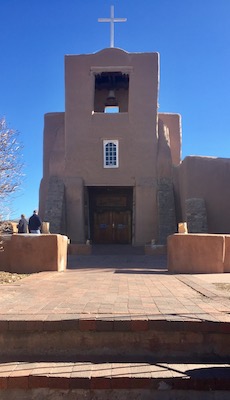
In the twentieth century the area became very popular with writers, artists, and retirees. They came to Santa Fe for its dry mountain air and beautiful scenery. The City sits at the edge of the Sangre de Cristo Mountains, which can be seen from most parts of town. There is now a strict architectural code; homes and buildings use traditional techniques and styles, now known as the Spanish Pueblo Revival look. They are usually flat roofed, clad in earth-toned stucco, and very charming. The downtown is centered on a historic open plaza surrounded by upscale stores, gift shops, restaurants, and museums. 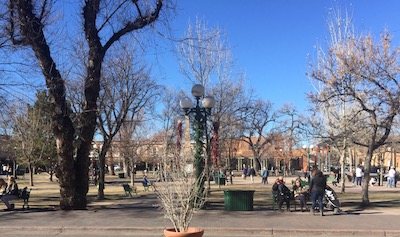
Native American artisans spread their wares out on the sidewalk on one side of the square. A block away the St. Francis Cathedral and its lovely park provide more to the town center.
Climate
If you are one of those people who hates humidity, Santa Fe is the place of your dreams. The terrain is desert and the air is very dry – average annual rainfall is about 14” and it feels like there is no humidity in the air. Thanks to its very high elevation (7200’) the average January temperature is 30.5 while the average July temp is 70.
Retiring to Santa Fe
AARP has an office in Santa Fe, which gives you the idea that Santa Fe is a popular place to retire. The climate and scenery are big attractions, and so is the very lively cultural scene. It attracts an upscale crowd, some of whom come seasonally seeking cooler summer weather, popular festivals like the Fiestas de Santa Fe, or the possibility of winter sports. There is certainly plenty to do both in and out of doors. It is a popular tourist destination with many popular festivals and holidays that can bring very large crowds. We visited here in the Christmas holiday period and lines at popular restaurants were very long.
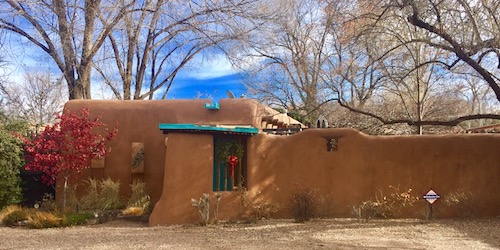
Where to Live
Santa Fe has an interesting mix of homes in various neighborhoods. The streets are old and rarely straight, many have dirt/gravel paving. Beautiful low adobe style homes often stand behind natural stockade fences with desert landscaping. Most seem to have private courtyards as extensions of the living areas. In addition to single family homes there are some small scale condo and apartment complexes. We were surprised at the number of active adult and retirement communities in the Topretirements database for Santa Fe – 13. There is at least one life care community with an ideal location in the heart of town. The Zillow Home Value Index is currently $316,500, making real estate more expensive than the national median of $200,000. Small homes in town seem to be available from the $300’s, nicer ones will approach or go over $1 million. Properties in the hills going up to the mountains are often multi-million dollar trophies.
What to do
Art is a very big focus here, starting with the Georgia O’Keefe Museum in the heart of downtown. This distinguished American artist spent the latter part of her life capturing the New Mexican scenery and life in her distinctive style. Museum Hill on the southeastern edge of town offers a complex of interesting museums including: Museum of International Folk Art, Spanish Colonial Art Museum, and the S.F. Botanical Gardens.
Other Museums downtown include those for Contemporary Native America Art, Museum of Indian Arts & Culture, New Mexico Museum of Art, and the NM History Museum. Canyon Road is a half mile stretch of gallery after gallery which attract collectors from all over the world. Every style of art is represented, although the emphasis is on contemporary and southwestern art. The Santa Fe Opera has a majestic site a few miles north of town and a busy season from to June to August.
Hiking is very popular: from St. John’s College you can ascend trails on the mountains for great views stretching to Los Alamos and farther. There are some 80,000 native American archaeological sites in the area including many with National Parks – the cliff dwellings at Bandelier are an easy hike about an hour away. Santa Fe even has its own ski resort at its northern end with some great trails. Taos, the famous ski resort is 2 hours north. The town is filled with restaurants and the food is at a high level. In addition to the many restaurants popular with tourists, locals enjoy unpretentious New Mexican spots like Altrisco Cafe.
Cost of living
Being a very desirable place to live and retire, the corollary is that it is more expensive to live in Santa Fe than in many other areas of New Mexico and elsewhere. Real estate is pricey, but not totally out of reach. At 8.7% the total tax burden in New Mexico is the 37th highest of all the states, property taxes tend to be low too. Prices in restaurants seem reasonable – our bill for 8 people in one popular restaurant was just over $200 with tip.
Transportation
The New Mexico Rail Runner Express offers commuter rail service to Albuquerque, quite an advantage for a retiree who wants to take advantage of Albuquerque for a day trip. By car the same trip is just over an hour on I 45. Santa Fe Trails operates bus service within Santa Fe. Most parts of town are walkable. There are public parking lots sprinkled around town but Lyft or Uber is often the best way to go if the walk is too far.
Medical
Medical resources here are very good. There are two hospitals in town: Christus St. Vincent and Santa Fe Indian Hospital. Albuquerque has many more a short distance away.
Pluses and minuses
– An incredibly beautiful setting in a desert mountain landcape
– Very little to almost no humidity
– A vibrant art scene second to none on a pound per pound basis. If you love art, particularly shopping for it or just browsing, this is the place for you
– Moderate temperatures thanks to its high altitude
– Tremendous outdoor possibilities: hiking, skiing, fishing, and biking (mountain or road).
Minuses
– It is very crowded in tourist season and when big festivals like the Fiestas de Santa Fe or Native American crafts are in town
– The high altitude is probably not good for people with circulation or heart problems
– We found the dry air too much for our skin – couldn’t wait to get back to humid Florida
– A fairly expensive place to retire
For more about Santa Fe and retirement in New Mexico
New Mexico Retirement Guide
More about Santa Fe retirement
Bottom line
There is definitely a group of people who would love retiring here – either for part of the year or permanently
Comments? Please share your thoughts in the Comments section below.
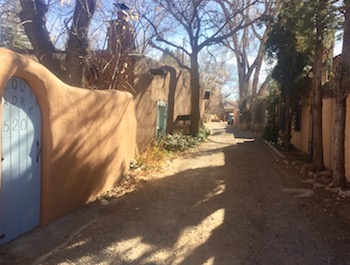
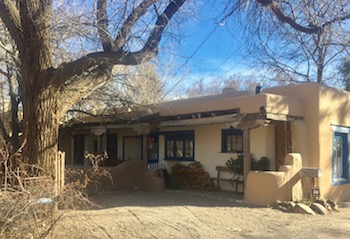
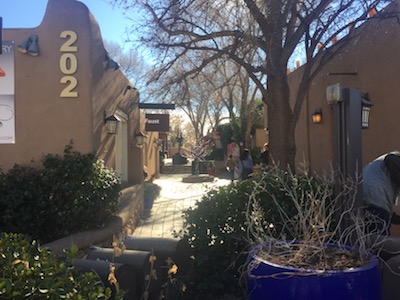
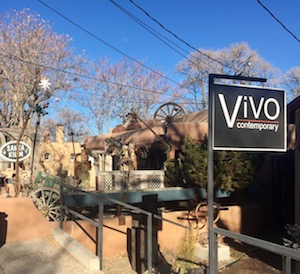
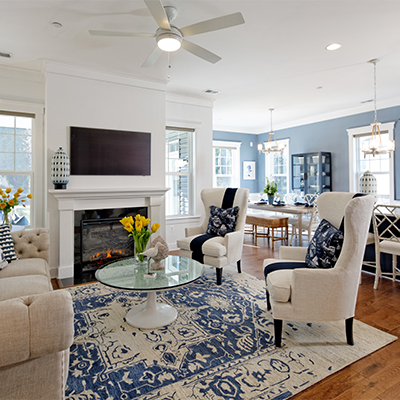
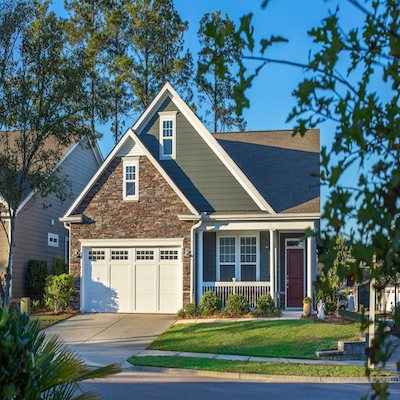

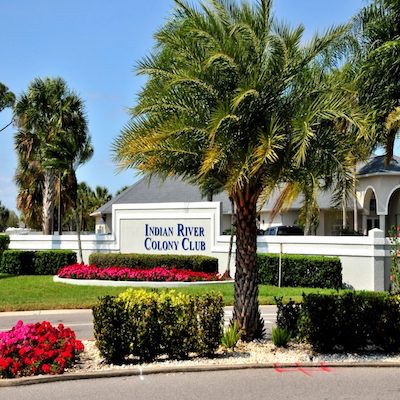
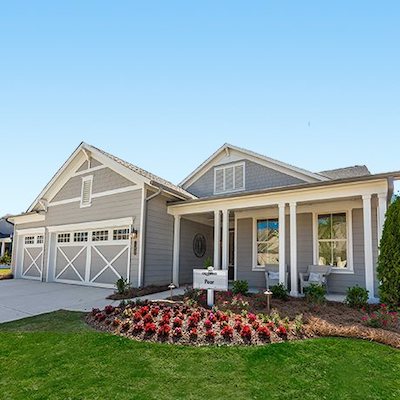
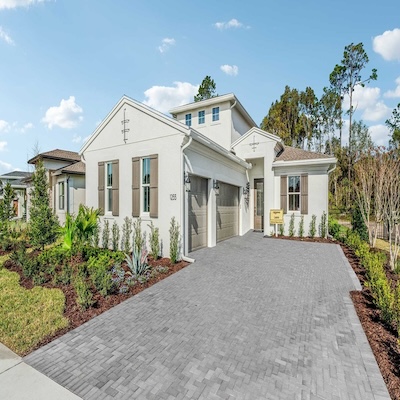
Comments on "A High Desert Retirement: Santa Fe, New Mexico"
LS says:
We have visited Santa Fe several times and it is a great place to visit. However, living there is not for us. I found the Spanish Pueblo Revival look quite boring. The sameness of the architecture was depressing. I guess you could say that many areas of the country, and the world, have similar restrictions or just traditions on their building styles but in Santa Fe it is overdone. Paying a million dollars for something that looks like a hovel from Mexico isn't for me.
As for the art scene, if you like Native American art you will certainly find that in Santa Fe, and not much else. However, the Georgia O'Keefe museum is wonderful. I could spend all day there.
Taos is also great. It is much smaller and without the restrictions of Santa Fe. Their old town center is worth a trip to explore the shops and restaurants.
Lynn says:
We also have visited. It seemed to us that any house in the downtown area, where it is walkable, was pretty high priced. The central area has a lovely farmers market on the weekend. I do love the architecture, art, and the multiple cultures represented here. But, outside of the central area, were it is affordable, it is not walkable. Traffic was an issue for us. Typical of western cities, everyone was in a car and the roads were packed. I may be mistaken, but I also believe that New Mexico taxes pensions and social security, making it somewhat less desirable as a retirement option. The State of New Mexico seems to have some chronic economic problems.
Pam says:
Hi, we have visited as well. The housing is very expensive!
And the lady above is correct- they do charge tax on
Social Security. Also, my husband’s cousin just had a stroke And they had to airlift him to a hospital in Albuquerque, so they may not have great hospital facilities for us “seniors”.
Leo says:
We live just down the road from Santa Fe in the town of Bernalillo about 40 minutes by car and a bit over an hour on Railrunner. Real estate prices in SF are insane. Our home in Bernalillo is worth around $350K which is for 2200 square feet plus a 750 ft. studio. In SF on the east side of town that same house would run 800K to $1,000,0000. So much for affordability.
The art scene is world class rivaling New York, Scottsdale, and other art centers around the globe. Yes there is a lot of Indian art, but you can find art of all sorts here including all genres that you may be interested in.
Property crime is a real problem in New Mexico perhaps due to our troubled economy. Most troubling though is the DWI problem, last week someone was picked up on his 15th DWI, today’s paper had someone charged with his 10th. This is a common occurrence here. Unfortunately the judicial system is the main culprit for this situation,the cops do their jobs, but whether it be violent crime, property crime or DWIs the judges here practice a form of “catch and release”.
Another issue here are taxes, yes Social Security is taxed here which hurts retirees. Would I move here knowing what I do now after 11 years? Absolutely not. Would I move to another state? Probably not. Having lived in Washington, California, New Jersey, Utah, as well as Georgia, New Mexico grows on you. The climate is fantastic, the recreational opportunities are unparalleled, the Triculture (Indian, Hispanic, and Anglo) is unique to say the least. The history here is fantastic to behold. One can visit an Indian pueblo that has been continuously inhabited for over a thousand years. Santa Fe was a thriving trade center and town before the Pilgrims had not even been thought of.
Before even thinking of retiring here visit not just during the summer, but during all of our seasons. Oh I almost forgot, Santa Fe is a real food town, from the best New Mexican cuisine, not Texmex, to The best French to everything in between.
Editor comment: Thanks Leo for this fantastic and on the scene input. Wonderful!
Jay says:
I'm not going to provide a comprehensive comment; I just want to make a few short observations of our experiences there.
My wife and I lived in the community of Eldorado, south of Santa Fe, for 15 years, before moving to Ohio in 2016. My wife needed to see some green, other than junipers and pinon pines. But we loved the wildlife near our home - we had bobcats and coyotes in our yard, and counted 65 species of birds!
I think the city and state are great places. I loved the proximity of the mountains: in less than an hour, you could be at over 12,000 feet elevation.
Both road and mountain biking are great - check out the annual Santa Fe Century bike ride.
Bandelier National Monument is less than an hour's drive away. There's nearly unlimited access to National Forests and land managed by the BLM.
The article states that annual precipitation is 14". That occurred in only 2 of the 15 years we lived there, and in at least 7 years, it was less than 10". Santa Fe is truly high desert, so if you move there, be prepared for long periods of little precipitation. Don't plan on gardening unless you are willing to spend a lot of time amending your soil and watering, watering, watering.
Utilities as a whole are less than where we currently live. The cost of water in Santa Fe is much higher than where we currently live, and could be even higher to reduce consumption (though Santa Fe and Eldorado residents are very conservative in their water use). Otherwise, the cost of electricity and natural gas is far less than many other parts of the USA.
Santa Fe has great restaurants, with a great variety of ethnic choices. I really miss Santa Fe's groceries, and the weekly Farmer's Market, too.
Winters are generally mild , with little snow. Summers are nice; June is generally the hottest month.
I agree with Leo about DWI - it is a real problem, with many repeat offenders. And I agree with Lynn - outside of downtown, Santa Fe is not designed for pedestrians
Bob says:
The hospital part problem in Santa Fe mentioned above is true. If you live in Santa Fe you may get airlifted to Albuquerque for special care. Santa Fe is great for artists and boutiques and well as high-end coffee shops. And SS is taxed in the state as well, which is why it is betters for civil servants retiring there under the CSRS.
says:
My wife and I retired to Rio Rancho a few months ago, just a few miles south of Leo in Bernalillo and agree with him.
We moved here after spending the past 20 years working in DC and living in Northern Virginia. My wife was born and raised in Los Alamos, NM; my father-in-law still lives there in a retirement home, and our older son moved to Albuquerque two years ago after spending his whole life in Pennsylvania and Virginia.
Purchased our 2100 sqft home with wonderful views from our backyard of the Sandia Mountains to the east with just one home between us and the Rio Grande with its miles of both open and wooded walking trails for $285K. No way you could come close to a home with views in a neighborhood like this for twice that in Santa Fe.
It is an easy 45 minute drive to Santa Fe from here and we have done it several times since moving for various events (always including lunch or dinner or both!). But there is lots to do in Albuquerque and surrounding towns like Los Ranchos de Albuquerque, Corrales, Placitas, Cedar Crest, etc. as well as the many Pueblos that are closer to here than to Santa Fe (the only Pueblos closer to Santa Fe than here are those north of Santa Fe; others like Cochiti, Kewa-formerly Santa Domingo, San Felipe, Santa Anna, Sandia, Isleta, Zia, Jemez, Laguna and Acoma are all closer to Albuquerque).
Crime is a big issue in New Mexico, but much is localized to a few areas - the Albuquerque Journal had a series of articles a few months ago about the large percentages of property and violent crime occurring in neighborhoods where only about 10% of the city's population resides. Vehicle theft is rampant, but our cars stay in the garage when at home and always locked with nothing in view whenever we are out.
As for costs of living, taxes are far lower than when we lived in Virginia just outside the DC beltway. We have found food costs, both in grocery stores and restaurants, are indeed lower. Of course housing is much less costly; for other costs some are lower (utilities) and some are about the same (home, car, and health insurances), but overall it far less expensive to live here than in Northern Virginia.
Since we moved here we have noted that temps are usually about 5-15 degrees warmer here than in Santa Fe. We find that a plus most of time. Some may not like how high temperatures get in the summer but we think it pays off in the winter when we are not as cold.
GerryK says:
Having visited Santa Fe several times, I really found it a fascinating and interesting place, a place I'd want to retire to except for the high cost of housing. Home prices are way beyond my reach. I found a builder of "reasonably" priced new homes south of I-25 that were still beyond my reach, but interestingly, this builder was building the exact same homes in Rio Rancho, a suburb of Albuquerque, and they cost $50k less there. The desirability of the city's culture and lifestyle has pushed land prices far above the rest of the state.
Also a note to Bob. CSRS retirees get no advantage over SS pensioners. Your CSRS pension is taxed just as SS is. But it's important to look at one's overall tax burden in a state. Texas doesn't tax income but property taxes far exceed New Mexico's. Sales taxes are lower in NM, too. In terms of overall tax burden, NM is fairly low among all the states. Doing a little calculations on my personal income, and likely tax burden in both TX and NM, I would actually pay more in taxes overall in Texas for the same cost house. Your taxes may differ based on your income and housing costs. I never just base tax costs on income tax level alone when looking at potential retirement location cost of living.
Bob says:
Good call on the government retirement aspect, Gerry. And, yes, Megargeeva, all costs need to be factored in, since a number of folks just look at specific taxes rather than the whole economic picture. I plan to move to Albuquerque. I own my home in the Washington, D.C. area but after much research I know where I want to be......
GerryK says:
I can certainly appreciate that, Bob. I, too, lived and worked in the DC area before I retired and left. I also understand the lure of NM. Land of enchantment indeed. There is something about the place that draws you in.
Michael says:
Comparison is made of Santa Fe costs and New Mexico taxes with one of 4 border states, Texas. No one has selected Oklahoma, Colorado or Arizona. Why? Texas property taxes are high, especially around the large cities; e.i., Houston, Austin, etc. Yet, there are areas were property taxes are 4.3%-4.7% and no one selected them. Let’s be fair and not misleading when making comparisons.
Marc says:
Not to forget that in NM the drug epidemic cannot be taken care of and also NM is one of the top crime States.
Joseph says:
Hi, I'm interested to read about Santa Fe. Our plan was to return from SF Bay Area to Naples, FL. and sort out choices from there however our place was devastated by Hurricane Irma. Our default was off the table. We decided that as we wouldn't be able to sell and get out of FL. due to the place being wrecked we will rebuild and balance off with a place in a more stable weather area. We just closed on a place in Eldorado. We chose Eldorado because it met most of what we were looking for. Clean, quiet, safe with a bit of elbow room from your neighbors. We liked the youthful vibe of the community both Downtown and at Eldorado. Was it pricier than other options? Yes, most definitely. Although the common charges aren't expensive it was more than we wanted to spend originally. We visited the Senior Center where we found friendly people willing to share their experiences. I was kind of bummed out there wasn't a gym there however they did have some fitness classes we will attend. There's a really nice Rails to Trails Bike and Hiking path that leads into Santa Fe we will explore although I suspect we'll opt to ride in the opposite direction to avoid any street crossings as you get into town. I've heard some folks commute into town by bike on this route. I've been visiting NM for many years and we have a piece of land in La Luz, NM. that is quite pretty. We really love that spot but sadly Alamogordo offers much less culturally. We opted for Santa Fe for the cultural and outdoor opportunities and it makes a great base of operations to explore the Mountain West. In regard to Health Facilities there is a large Presbyterian Hospital being built that hopefully will attract more Medical Specialists to the area. I have been told that that a Bond Issue will expand and improve Santa Fe Airport which hopefully will make it a viable alternative to Sunport in ABQ. which really isn't that far away at a one hour ride. NM gets knocked around a great deal and I know it's got it's warts. In fact some pretty big ones. We've lived in much more "dangerous" cities and stay away from situations that would cause problems. I suppose I've got lots of hopes. I'm approaching it with eyes and heart open. We shall see.
Bob says:
Interestingly, in the USA, the three states withe the most violent crime per 100K population are: Alaska, Nevada, and Tennessee. Now, property crime is vastly different than violent crime. While the three states noted above are the worst for violent crime, the theft of pink flamingos from lawns is perhaps worst in Virginia.
GerryK says:
So true, Bob. And in reply to others, the reason I didn’t make comparisons to rural Texas is because no one is flocking to those areas for retirement. And OK? Ever been there? Not my idea of a retirement haven. Even if taxes are lower there, in terms of desirability, OK falls short for me. I believe taxes are lower in MS, too, but I wouldn’t want to live there either. CO is great, but with regards to overall tax burden, I believe total taxes will be higher there than in NM, again depending on variables such as income and housing costs. Also, the drug epidemic is likely not worse in NM than anywhere else, especially in those supposed retirement-desirable rural areas (as well as big cities) in states such as Texas.
But let’s not belabor the point. Taxes should not be the overriding factor in where you choose to settle. The overall fit for the things that matter to you personally is much more important.
Clyde says:
I do love the area of central NM, from the northern border down to Las Cruces. So beautiful with mountains and high desert. Even some greenery. Ultimately, the best retirement spot is where you think you fit best, and can also afford it. And once you settle, do so with the thought that you might move if it doesn't work out. That takes some planning. But it's not good to feel forever locked into a place that turns out not to be what you hoped for, even when you put a lot of research into it. It's good to keep your options open if you can. And if you can't, there are ways to make your life better, even in a place that isn't perfect. An important option is to keep an open mind, and work at being optimistic (glass half full rather than half enpty).